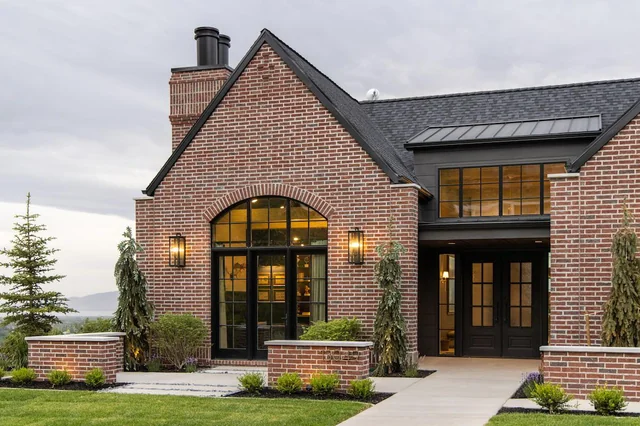8 Key Components of a Successful Gutter Installation

When it comes to protecting your home from costly water damage, having a well-designed and professionally installed gutter system is non-negotiable. But a truly effective system depends on more than just hanging a few metal channels around the roofline. The best installations include a variety of components, all working together to divert rainwater safely away from your property. If you’re searching for a gutter contractor, understanding these components will help you make informed decisions and avoid future repairs.
In this blog post, we break down the 8 essential components of a successful gutter installation and explain how each part contributes to the protection and longevity of your home. United Gutters, a trusted gutter contractor Latham NY, uses only top-tier materials and installation techniques to ensure your investment lasts for years.
1. Gutter Channels
The core component of any gutter system, gutter channels are the long horizontal sections that collect water from your roof and guide it toward the downspouts. These are typically made from materials like aluminum, vinyl, copper, or steel.
What to look for:
- Material durability: Aluminum is lightweight, rust-resistant, and cost-effective.
- Style: K-style gutters are common and offer higher water capacity.
- Size: 5- or 6-inch widths are standard, with larger sizes for steep or expansive roofs.
- Seamless design: Seamless gutters minimize leaks and look cleaner.
2. End Caps
End caps seal off the open ends of the gutter channels to ensure water doesn’t spill out at the edges. They are essential to maintaining the direction of water flow and protecting siding from unintended moisture.
Importance:
- Prevent leaks at terminal points
- Protect fascia boards from water damage
- Should be sealed securely with waterproof material and riveted into place
3. Downspouts
Downspouts are vertical pipes that carry water from the gutter to the ground, where it’s safely dispersed away from your foundation. Each gutter system needs a carefully calculated number of downspouts depending on roof pitch and drainage needs.
Features to consider:
- Placement near corners or valleys for maximum efficiency
- Must be securely attached with straps or pipe cleats
- Downspout extensions or splash blocks help prevent soil erosion
4. Gutter Miters and Elbows
Miters connect gutter channels at corners, while elbows are used to change the direction of the downspouts. These components allow water to smoothly navigate around architectural features without losing momentum.
Why they matter:
- Seamless transitions reduce the risk of leaks
- Custom-fit miters are more effective than store-bought connectors
- Proper sealing and alignment are critical for performance
5. Fasteners and Hangers
Fasteners like screws, rivets, and gutter hangers provide the structural support needed to keep your gutter system attached to your home. Modern hangers are hidden, strong, and help maintain proper gutter slope.
What makes a difference:
- High-quality stainless steel or aluminum screws for corrosion resistance
- Hidden hangers improve aesthetics and support
- Correct spacing (usually every 24 to 36 inches) prevents sagging
6. Outlet Tubes and Drop Outlets
Outlet tubes are installed where the gutter and downspout meet, directing water from the channel into the downspout. This is a high-flow zone that must be carefully installed and sealed.
Key benefits:
- Maximizes water drainage efficiency
- Reduces the risk of overflow
- Sealing is crucial to prevent leaks at this transition point
7. Gutter Guards
Gutter guards are mesh, foam, or cover systems installed over the gutter channel to block debris while allowing water to pass through. They are highly recommended for properties with surrounding trees.
Why install them:
- Minimize clogging from leaves, twigs, and pine needles
- Reduce frequency of cleanings
- Extend the lifespan of the entire system
8. Proper Slope and Alignment
Even the highest-quality materials will fail if your gutters are not installed with the proper slope. Gutters should slope approximately 1/4 inch for every 10 feet toward the downspout.
Professional alignment ensures:
- Effective water drainage without pooling
- Less stress on fasteners
- Longer lifespan with fewer repairs
Why Proper Gutter Installation Matters
A gutter system isn’t just a feature—it’s a frontline defense against flooding, foundation issues, mold growth, and roof rot. Each of the eight components listed above is crucial for a well-functioning system. When even one part is overlooked, the entire drainage plan can fail.
Risks of poor installation include:
- Water intrusion into basements or crawl spaces
- Rotted fascia and soffits
- Soil erosion and landscape damage
- Damage to siding and staining
This is why hiring a qualified gutter contractor in Latham NY like United Gutters is so important. Their experienced team ensures that every system they install uses premium components and is customized to the home’s unique architecture.
Learn More About Gutter System Health
Want to learn more about signs of gutter failure? Check out this guide on clogged gutters and what to do about them. For expert insight into maintaining your system, don’t miss these professional tips from a gutter contractor near you.
Final Thoughts
A successful gutter installation is not just about hanging a few metal troughs—it’s a system built with precision, engineering, and proper technique. Each component plays a vital role in shielding your home from water-related damage. For a long-lasting, reliable solution, always consult with a professional gutter contractor who understands how to bring all these elements together.
United Gutters offers comprehensive gutter services throughout the Capital Region and beyond. Whether you’re upgrading your home’s exterior or building new, trust United Gutters to deliver results that protect your home for decades to come.
